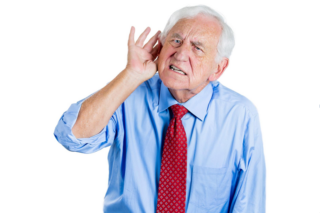


Our hearing is very important to us, so when our abilities start to wane, it can be very concerning. There are multiple reasons for hearing loss, and some can be reversed through treatment. Many cannot.
If you notice a decrease in your ability to hear, you should contact an ENT doctor in Los Angeles, as treating the cause early could potentially save your hearing. Our ENT specialists in Los Angeles have a demonstrated ability in diagnosing and treating hearing disorders, and we have repeatedly been awarded for our expertise.
Our specialists detail the common causes of hearing loss below.
Many of our patients ask “why does hearing get worse with age?” But there is no known single cause of age-related hearing loss. The inner ear naturally changes as you age, and this is a common cause. Scientists also believe that your genes can also play a large role.
Most hearing loss is a combination of genetic and environmental factors, including:
A hearing aid doctor in Los Angeles can help fit you with a device that can increase your ability to hear despite your organic hearing loss. Whether it’s a cochlear implant or hearing aid, our office can examine the nature of your age-related hearing loss to fit you with a solution.
Noise-induced hearing loss symptoms and causes can vary greatly. It can be noticed immediately or over time, and this kind of hearing loss can also be temporary or permanent. Sound-related hearing loss can occur due to a single loud noise or it can be the result of repeated exposure.
Whether it’s a loud machine like a lawnmower or speakers that are turned up to high, noise-related hearing loss can have multiple causes, but it’s recommended that you avoid loud noises in general.
If you work in the following industries, you may be at risk for hearing loss:
If you work in one of the above industries in Los Angeles hearing specialists highly recommend that you wear protective earplugs or earmuffs to minimize the damage caused by the loud noises you’re exposed to.
Hearing loss can also be due to a literal blockage within your ear. A common blockage that our doctors treat is abnormal skin growth in the middle ear behind the eardrum called cholesteatoma.
Cholesteatomas often develop as cysts or pouches that shed layers of old skin, building up to a size that fills the inside of the middle ear. Over time, the blockage caused by cholesteatoma can increase to a size that results in hearing difficulties, and it can even grow so big that it puts pressure on and destroys the surrounding delicate bones of the middle ear. When an ear nose and throat doctor in LA removes your cholesteatoma, your hearing should return to normal.
Otitis media, which is an infection of the middle ear, can sometimes result in hearing loss. This is why it’s important to treat an earache that lasts longer than a few days.
Hearing loss can be caused by an ear infection because an infected inner ear will overproduce earwax and pus, and the buildup of these fluids will absorb sound, making it difficult to hear.
Loud sounds, ear infections, insertion of foreign objects, and head trauma can all rupture your eardrum.
A ruptured or perforated eardrum is when a tear occurs in the thin tissue of your eardrum. A tear in your eardrum can result in hearing loss because the thin tissue of your eardrum will vibrate as part of processing sound. However, your hearing loss should only last as long as your eardrum is torn.
The ear is a complex structure of skin, tissue, and bone, and only a specialist is able to treat your hearing loss. In addition to hearing loss, our ear doctors can also help with other ear-related disorders, such as vertigo and Meniere’s disease.
We accept most PPO insurance plans, Medicare, and select HMO’s to keep hearing relief open and accessible to the Los Angeles community. Our two offices are conveniently located in Santa Monica and Culver City. To set up an appointment to discuss your hearing issues, please call (310) 361-5128 or email appointments@westsidehn.com.